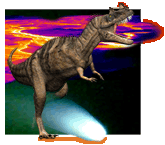Defining the Cretaceous-Tertiary Boundary: A Practical Guide and Return to First Principles
Type
The Cretaceous-Tertiary boundary (KTB) is one of the easiest epoch boundaries to identify, whether based on lithological changes in the field, geochemical analysis in the laboratory, or fossil content. A set of five KTB-identifying criteria, originally proposed by the ICS working group during 1980 -1990s, have proven globally applicable and independently verifiable: (1) mass extinction of Cretaceous planktic foraminifera, (2) evolution of the first Danian species, (3) KTB clay and red layer, (4) Ir anomaly, and (5) δ13C shift. Despite this successful track record, it was recently proposed to reduce the five KTB-identifying criteria to just two, the mass extinction and impact signals, based on the assumption that the Chicxulub impact caused the mass extinction and therefore defines the KTB. Because this assumption is contradicted by stratigraphic data in many places, this has led to contentious arguments, whereas defining the Chicxulub impact as KTB in age has led to circular reasoning. This study demonstrates the contradictions, pitfalls, and erroneous assumptions that accompany the use of these reduced impact-event-based KTB criteria. Returning the definition of the KTB to its GSSP based on all five criteria, and where this is not possible based on the mass extinction, the first appearance of Danian species, and the δ13C shift provide the most reliable KT boundary markers. PDF

